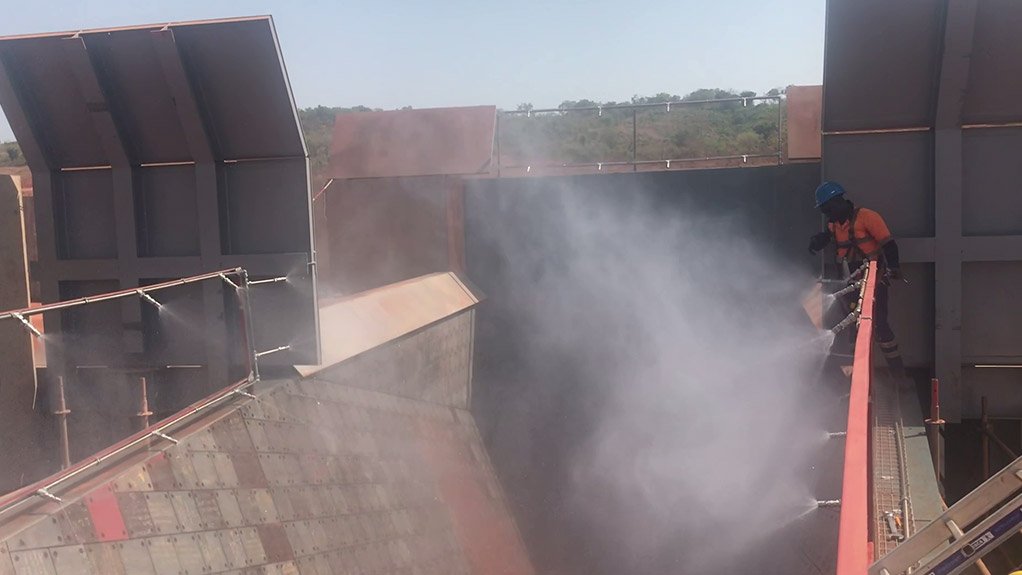Environmental consultancy and product developer I-CAT finalised a dust management project on a bauxite mine – a first for the company – in Guinea last month.
“This is a different ore than what we are used to – it was unique . . . and we have been successful,” I-CAT divisional manager Morné van Wyk tells Mining Weekly.
The company installed its localised dust suppression system (LDSS) – which was launched at the Electra Mining 2018 exhibition in Johannesburg – and a low-pressure misting system at the mine in March.
Competitors in the dust suppression market use high pressure systems (50 to 70 bar pressure) that require specialised pumps and pipes to create an atomising spray. I-CAT’s systems can create an atomising spray with low pressure systems (6 bar static which results in 4.5 bar dynamic pressure). The I-CAT LDSS is safer to use owing to the operating pressures that are lower than what other companies use. The added advantage of the low-pressure misting system is that it requires less maintenance and it is energy efficient, Van Wyk says.
The LDSS comprises of a steel structure with strategically mounted nozzles used to encapsulate dust particles and prevent them from becoming airborne. The system can also provide a cooling function where needed, and can be customised to meet client requirements. The system also reduces dust emissions by at least 85% and can be installed around crushers, push feeds, screens, transfer points and tipping areas.
I-CAT installed the system around the crushing and screening plant, and the low-pressure misting system around transfer points at the Guinea mine.
Van Wyk points out the impact of dust emissions on communities, employees and the environment and notes that this is a problem that should be properly managed and, that although the LDSS was mostly aimed at coal clients, the technology can be applied to any type of ore.
The LDSS has already been installed at two coal mines in Mpumalanga.
“Owing to the nature of the installation, it can be done during big shutdowns. Therefore, we install the system on a new plant or have to wait for a mine’s yearly maintenance shutdown, which is normally a 9- to 12-day process,” Van Wyk advances.
The company is working on a project to install an LDSS at another coal mine in Mpumalanga. The project is in the design phase and the system will be commissioned at the end of July.
Further, I-CAT has completed 17 dust suppression projects in Africa in the past three months in countries such as Botswana, Guinea, South Africa and the Democratic Republic of Congo.
The company has representation in many African countries through strategic partnerships. Van Wyk points out that I-CAT is the technical partner and supplies products and solutions while its partners in these countries handle marketing and the execution of projects.
Edited by: Mia Breytenbach
Creamer Media Deputy Editor: Features
EMAIL THIS ARTICLE SAVE THIS ARTICLE
ARTICLE ENQUIRY
To subscribe email subscriptions@creamermedia.co.za or click here
To advertise email advertising@creamermedia.co.za or click here













